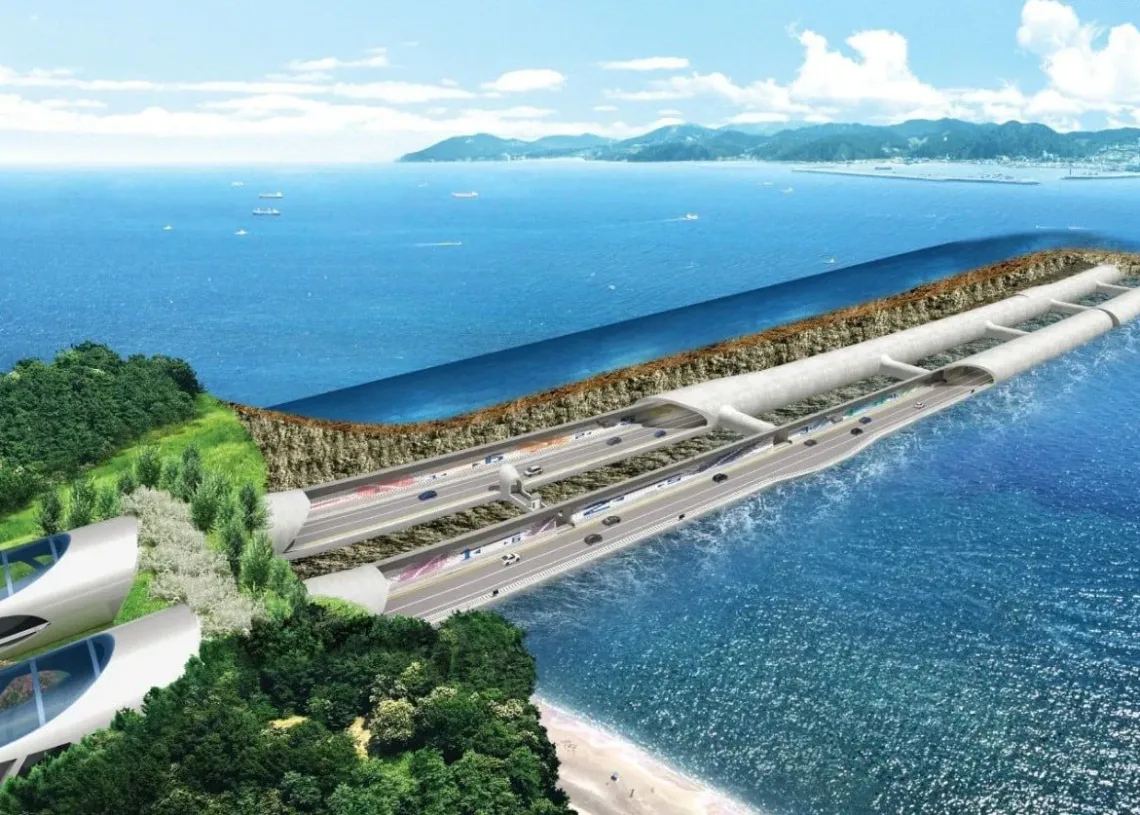A tunnel between worlds
In the bustling port of Tangier, ferries cross back and forth, carrying families, tourists, and goods between Morocco and Spain. This route has long been crucial to connecting Africa and Europe. Today, with the proposed building of the Strait of Gibraltar tunnel, a new chapter in this cross-continental relationship is forming.
The Strait of Gibraltar tunnel link between Morocco and Spain has once again captured international attention, thanks to recent developments in the two countries. On May 10, Spain allocated €1.6 million to conduct updated feasibility studies for an underwater rail tunnel that would link Punta Paloma in Cadiz to Punta Malabata near Tangier.
The project, formally revived in 2023, following a period of uncertainty and disruption since the start of the COVID-19 pandemic, has been under discussion since the 1980s. A recent joint statement issued by Spanish Transport Minister Oscar Puente and Moroccan authorities emphasizes the geostrategic importance of this crossing, which is seen to be more than just a physical connection: a bridge between continents, cultures, and economies.
Despite its promise, the Morocco-Spain tunnel initiative faces daunting technical challenges. The 42-kilometer rail tunnel would extend as low as 475 meters beneath the sea and have to pass through a seismically sensitive region near the Azores-Gibraltar fault line.
Symbolism and soft power
To Morocco, the tunnel is more than simple infrastructure. It is a demonstration of soft power and continental leadership. With the only African country to co-host the 2030 FIFA World Cup, (co-hosting alongside Spain and Portugal), Morocco is already making news. While early expectations had hoped to see the tunnel finished in time for the tournament, revised projections now place completion closer to 2040.
Still, the political and cultural momentum remains significant. In April, Spain’s Foreign Minister Jose Manuel Albares called for a strengthening of EU-Morocco ties, stressing the importance of bilateral cooperation amid rising global uncertainty. Morocco is not just a neighbor, but a strategic partner for Europe. The Morocco-Spain tunnel project could become a literal and symbolic way to make these ambitions a reality.
The cross-cultural initiative Operation Crossing the Strait (OPE), was referenced by Spain’s Ministry of Home Affairs as an example of “good coordination between neighboring countries and of the great preparatory work of our technical teams,” demonstrating how joint infrastructure efforts can be an example of broader diplomatic harmony. OPE is a “permanent [form of] communication between our respective teams.”
Local impact and ferry trade
Economically, the tunnel would transform regional logistics. Analysts at CAPMAD observe that the tunnel is part of wider EU-African trade ambitions, particularly the European Green Deal and supply chain expansion into North and West Africa.
Morocco, already a key trade partner with Spain and the EU, could further consolidate its role as an African entrance point for goods and labour. This is especially critical considering shipping disruptions and global instability that are pushing European countries to diversify supply routes and expand regional partnerships.
The economic stakes are high. Spanish transport officials state that the tunnel will bring a “quantitative and qualitative acceleration of the [Moroccan] economy” by opening up the movement of goods, services, and people.
In May 2025, the launch of new high-speed ferry services between Tarifa and Tangier by Balearia once again highlights this point. As one Balearia spokesperson explained to Morocco World News, “it’s a very important route for our customers, for Moroccans, and for all tourists visiting Morocco, particularly the city of Tangier.” This only adds to the commercial viability of investment in permanent infrastructure, with the Strait of Gibraltar tunnel initiative demonstrating the growing demand for safe and efficient crossings.
If ferry traffic is any indicator, demand for connectivity is high. The Gibraltar tunnel would not replace ferries but supplement them, offering a permanent, weather-resistant alternative.
A tunnel of dreams and doubts
Beyond the geopolitics and financial considerations lies a human story. For thousands of Moroccan families with relatives in Spain, and for students, workers, and tourists traveling between continents, the Strait of Gibraltar tunnel represents something tangible: ease of movement, integration and opportunity.
Whether or not this vision is achieved depends not only on engineering calculations, but on sustained political will and inter-regional cooperation.
However, not all are as optimistic. There is concern with the environmental implications of drilling through the sensitive seabed of the Strait of Gibraltar, especially in an area so crucial to marine biodiversity and the connecting point between the Mediterranean Sea and the Atlantic Ocean.
Meanwhile, the Morocco-Spain tunnel has often faced criticism as skeptics point to the decades-long history of missed deadlines and political detours. Although preliminary discussions began in the early 2000s, physical progress has been lacking, with each administration restarting efforts without any concrete goalposts.
Technically, the tunnel would surpass even the Eurotunnel (connecting the United Kingdom, France, Belgium and The Netherlands) and Norway’s Ryfast in complexity. The seismic hazards in the region make it unlike any existing underwater rail connection, as evaluated in regional infrastructure assessments.
A future in the making
In many ways, the Morocco-Spain tunnel is more than just an engineering feat; it represents the future of EU-African relations. It challenges the countries involved to contemplate something greater than borders and short-term gains. The tunnel is not simply steel and concrete, but the idea of greater continental solidarity.
As plans move forward and studies develop, the question remains: Will the Gibraltar tunnel unite communities and close old gaps, or expose new ones?
If completed, the project could stand as one of the 21st century’s most powerful symbols of Euro-African unity. For now though, it remains merely a vision. Even if the train takes years to arrive, the journey it promises has already begun.
